From simple cap sleeves to raglan sleeves, there are many different types of sleeves in fashion. You can create unique looks with different sleeve shapes, from puffy to slim fitting, long to short, and frilly.
Sleeves can transform the appearance of tops, blouses, coats, and dresses. Some are simpler than others, but they all serve a purpose in fashion. With this detailed guide on sleeve types, you will learn about the fit and purpose of 26 sleeve styles.
Did you know sleeves are not the only feature of clothing that can change a look? Learn more about garment cuts in these related blog posts:
- 25 Types of Necklines (Illustrated Guide)
- Types of Dresses with Pictures
- Types of Collars
- 23+ Types of Pants
- 29 Types of Skirts
- Dress Codes
Sleeves are my favourite part of pattern design. If you’ve been following my blog for a while, then you know how much I love puffy sleeves. With my Blouse One pattern, you can create a stunning billowing sleeve that is flattering and fun.
This Post Contains Affiliate Links. Please Read Our Disclosure Policy.
Types of Sleeve Lengths
Sleeves come in many different lengths. Some styles depend on the length of the sleeve, which differentiates them from others.
Here are some typical sleeve lengths:
- Cap sleeve – sits on the shoulder cap and never past the bicep
- Short-sleeved – sits halfway between the elbow and shoulder
- ¾ length – sits mid-way between the elbow and wrist
- Long sleeve – sits at the wrist or slightly past
Types of Sleeve Construction – Set in or Attached
Understanding the two types of sleeve construction, set-in and attached sleeves is essential. Set-in sleeves are more common than the attached sleeve style.
What are set-in sleeves?
A set-in sleeve style is a sleeve piece which is sewn into an armhole on the body of a garment. This is more common than the attached style because it is more fitted and structured.
A set-in sleeve can be harder for beginners to learn, but it is a common part of sewing. The sleeve head (top of the sleeve sewing pattern) will fit perfectly with the front and back pattern pieces at the armholes when sewn together.
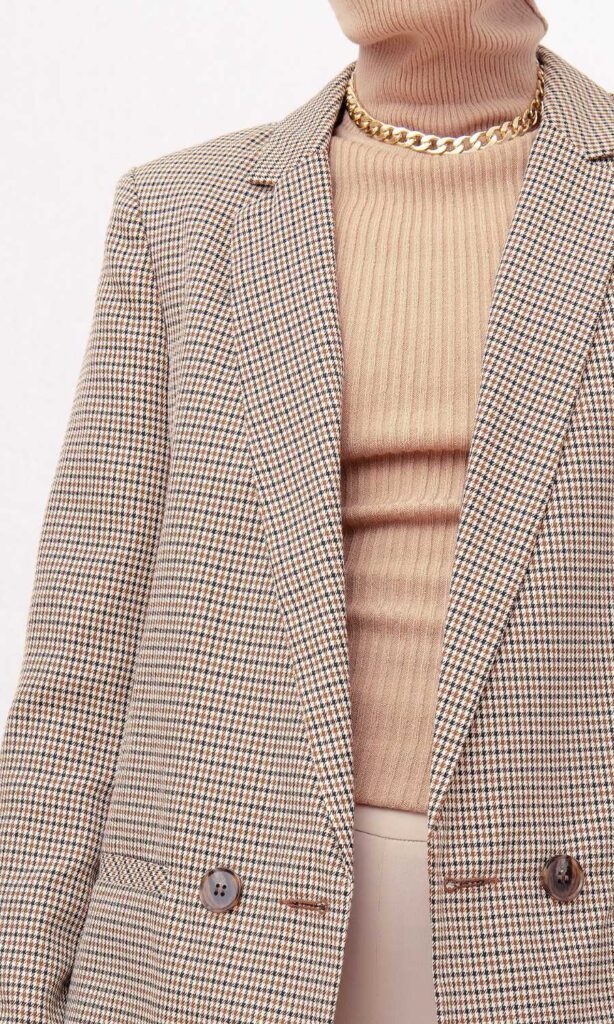
What are attached sleeves?
An attached sleeve is not separate from the garment’s body. Styles like the batwing sleeve include the sleeve in both the front and back pattern pieces, eliminating the need for a separate sleeve piece. Sewing attached sleeves can be faster than sewing set-in sleeves, but they will take more fabric to cut when laid out.
An attached sleeve will not have a seam running around the armhole and shoulder but instead from the neck, along the shoulder and down the outside of the arm.
Fabric Choices for Different Types of Sleeves
Another factor in the finished look of any sleeve and the overall garment is the fabric choice. Choosing the right type of fabric is essential for the sleeves to drape, puff, or stretch correctly so the garment can be worn.
The main characteristic of butterfly sleeves is their soft drape, so stiff fabrics would not work. For a t-shirt, sewing that sleeve from woven cotton wouldn’t work, as the wearer wouldn’t be able to fit the sleeve or top correctly.
Click on any image to shop the post
26 Types of Sleeves – A to Z Guide
Angel Sleeves
An angel sleeve is a pretty, floaty style with a wide hem. This sleeve style is wider at the shoulder than other sleeves and increases in flare or fullness down to the sleeve hem. You will often see a dress and top styles that are relaxed and floaty with this sleeve type. It usually ends just about the elbow area but can also be full-length, accentuating the style and ‘angel wing’ look.
Batwing Sleeves (Dolman)
Batwing sleeves do not have a traditional armhole. They are part of the garment’s bodice rather than a separate sleeve pattern called an attached sleeve. This creates the ‘batwing’ look that it is named after. Since there is no armhole seam, the bodice will have a seam above and below the arms, which creates the sleeve shaping. This style can be found on relaxed tops and dresses, especially in knitted fabrics. Many types will be tighter or cinched at the hem to create balance with the fullness of the sleeves. The length of sleeves is commonly cut to the elbow or full length to the wrist.
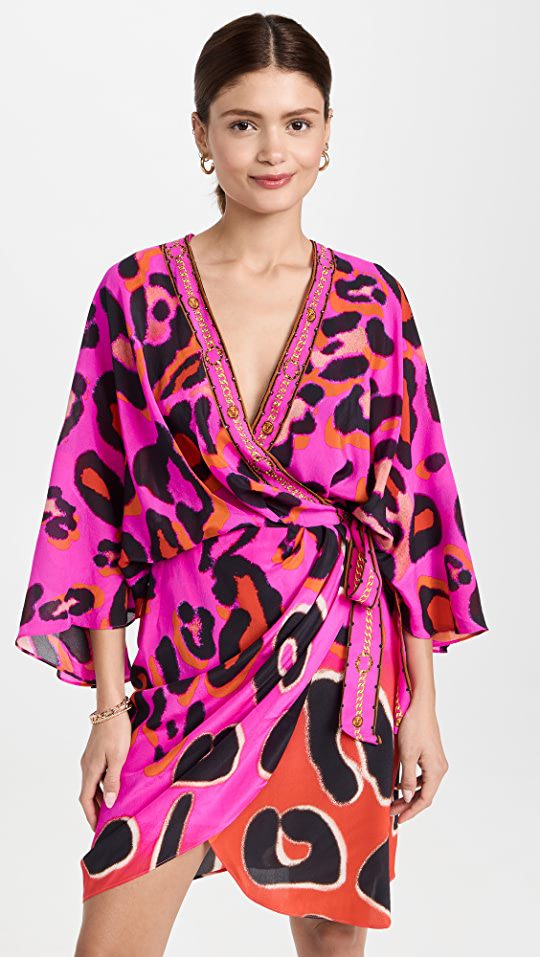
Bell Sleeves
Bell sleeves are an exquisite, feminine style. When sewn, the sleeve head fits perfectly within the armhole and begins to flare out towards the hem. Bell sleeves can be tailored down to the bell flare. Some styles will flare out as one piece, whereas others may have a flared bell sewn onto the bottom part of the sleeves. The sleeve’s hem is always straight, creating the full ‘bell’ look. The length of these sleeves can end anywhere between the elbow and wrist.
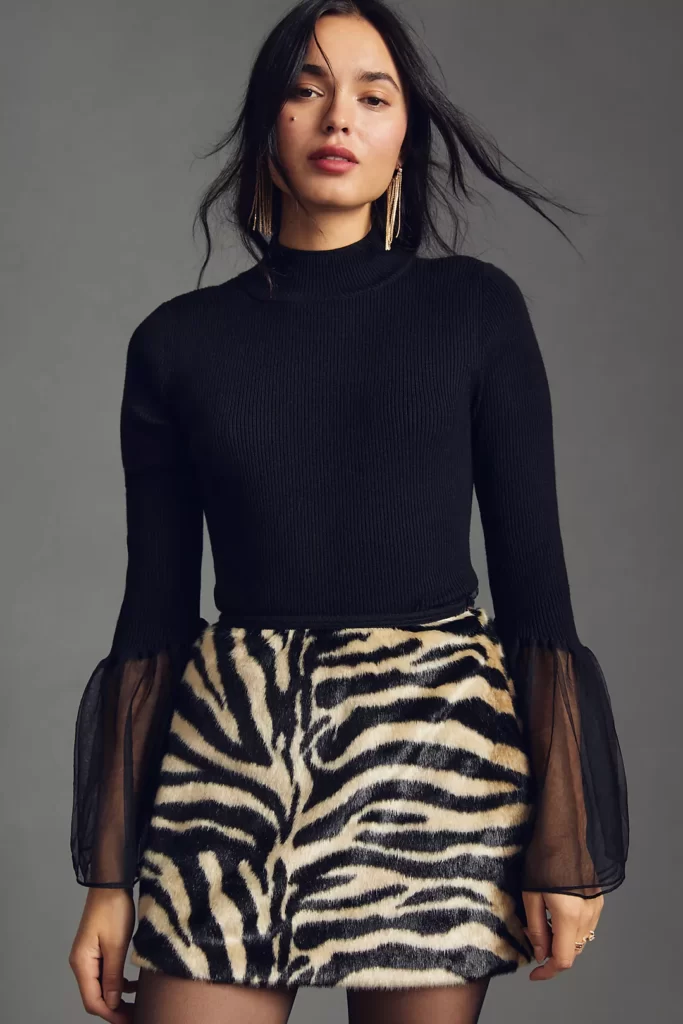

Bishop Sleeves
A bishop sleeve is very flattering. It is tapered at the shoulder to fit nicely along the bicep. From there, the sleeve is flared out to create fullness gathered at the wrist into a cuff or placket. Some styles may have elastic cuffs instead, which creates the gathered effect.
Butterfly Sleeves
A pretty, fluttery style, the butterfly sleeve is similar to a butterfly spreading its wings when the arms are lifted. They work best in delicate fabrics like chiffon, silk and voile on dresses, floaty tops, or blouses.
Cap Sleeves
A cap sleeve is a shorter sleeve that goes just over the top part of the shoulder but tapers to almost nothing under the arm. An accurate cap sleeve doesn’t go past the bicep. Some cap sleeves will be sewn into the armhole like a traditional set-in sleeve. Others may be attached by only part of the sleeve piece, which exposes part of the shoulder. This is a very feminine style that is often seen on ball gowns, dresses and corset-style tops.
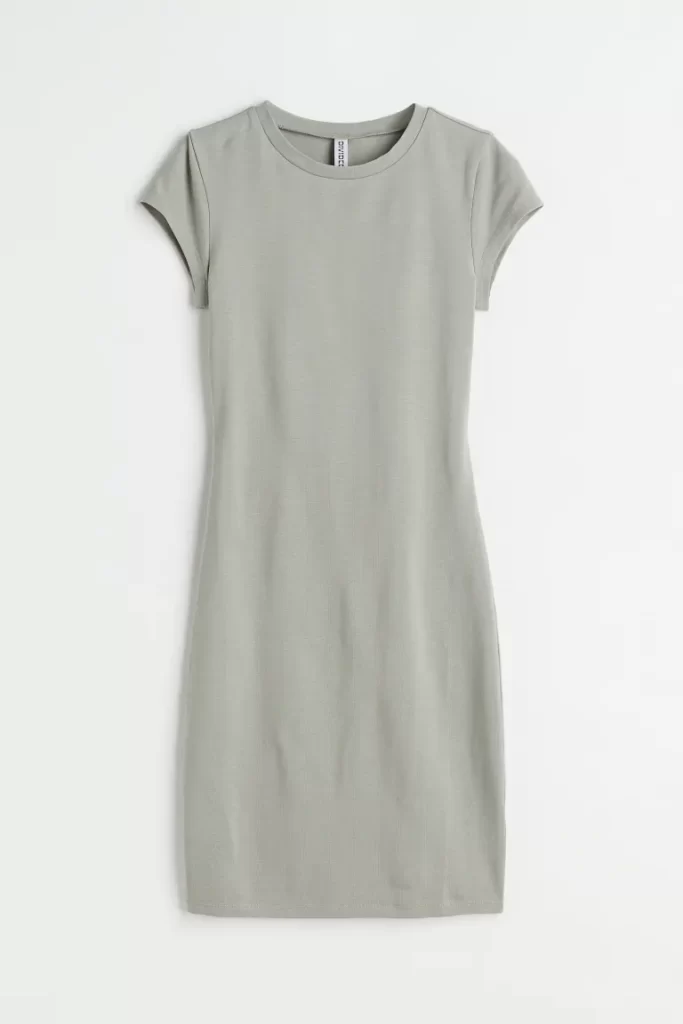
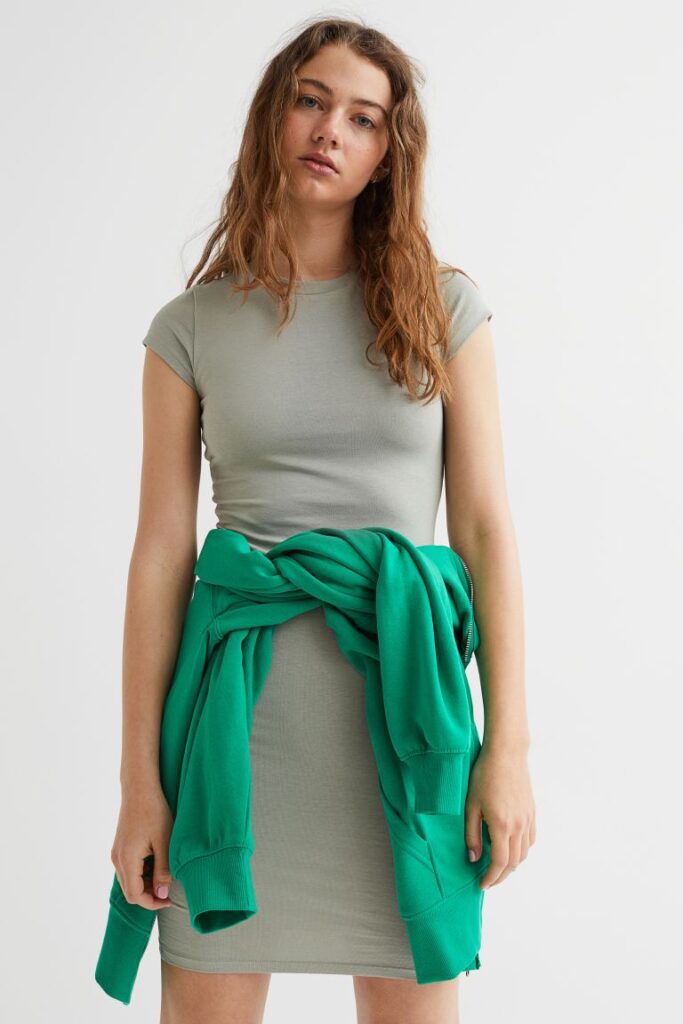
Cape Sleeves
As the name suggests, cape sleeves are full, flared sleeves that look similar to a cape. They have a split, usually on the inside of the arm. Some styles will layer the sleeve in two pieces to create a wrapped cape look, or the sleeve will be cut down the middle and hemmed. This sleeve can be found in going-out dresses or formal attire. It is also a popular jacket or coat for Winter that looks lovely with a waist belt or tie.

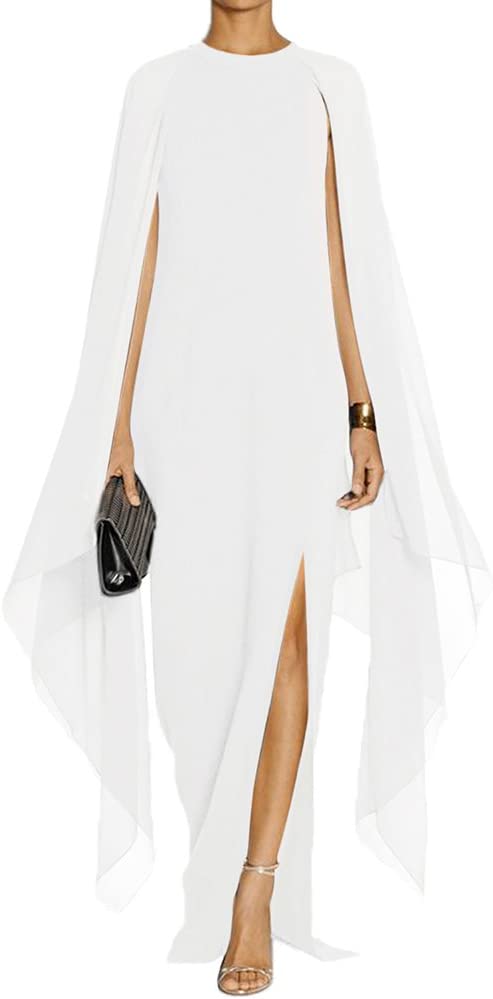
Cold Shoulder Sleeves
Cold shoulder sleeve styles expose the shoulders by having cut-out detailing or are off the shoulder with straps. Perfect for casual dresses and tops in the warmer seasons. This style was trendy in 2010 when bohemian was trending.


Circular Sleeves
Like a circle skirt, circular sleeves are cut out from a circular pattern, creating a full, draped sleeve. The longer and wider the circle shape, the fuller the sleeve. It works best with delicate fabrics that drape well, like chiffon, silk and rayon.
Cuff Sleeves
Cuffed sleeves are not a style of the sleeve but more the finishing at the end. Cuffs are additional fabric sewn onto the sleeves’ ends by following particular patterns and sewing techniques. There are many different types of cuffs which can be sewn onto sleeves to suit the clothing style. Cuffs can open and close by using buttons or snap locks which are helpful for tapered styles where the hand can’t fit through the opening. Cuffs are found on shirts, blouses, and jackets like puffers or weather protectors.
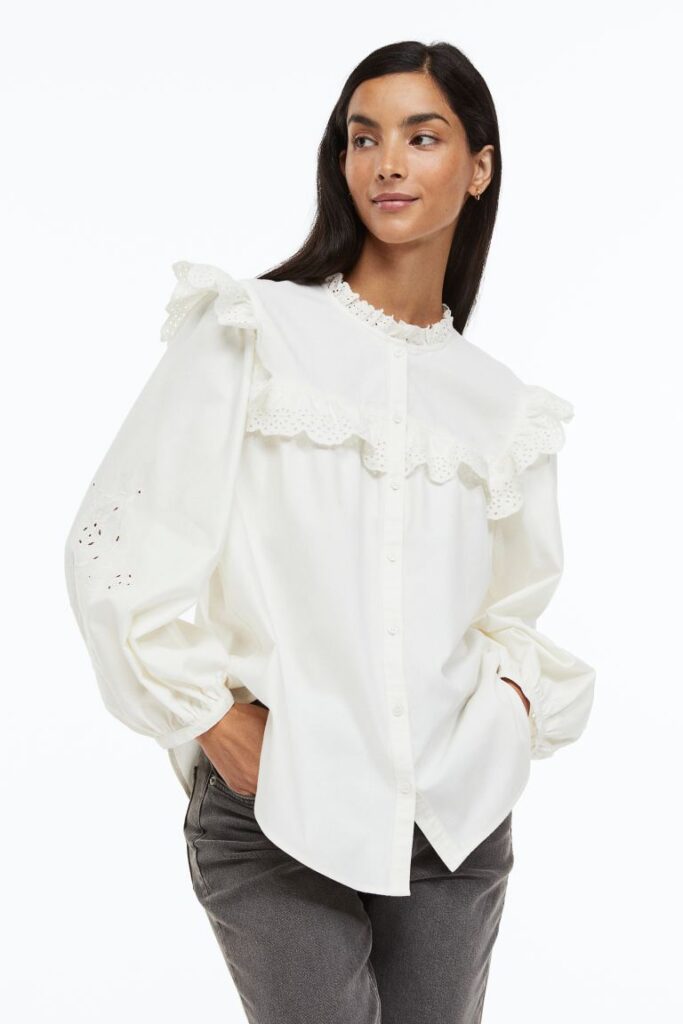
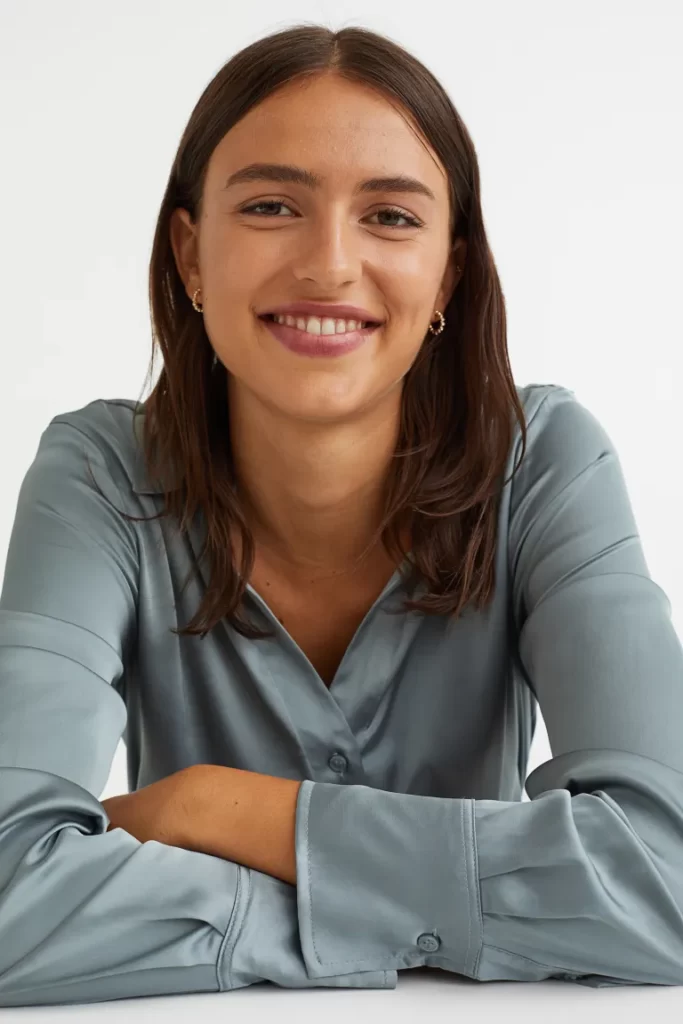
Drop Shoulder Sleeves
A drop sleeve has the shoulder seam altered to sit much lower than it is on the body. This creates a relaxed look where a sleeve somewhat drapes over the shoulder from the bodice of a garment. With many drop-shoulder styles, the armhole measurements are disregarded as the pattern extends past this point and into the sleeve. The sleeve will not be sewn to a traditional armhole but a straight, circular seam. If a sleeve is to be attached to the drop shoulder, it is often a simple rectangular shape. In the 1950’s drop shoulder coats were commonly worn by women. This style is still prevalent in womenswear for relaxed top styles and dresses.


Flutter Sleeves
A shorter version of a butterfly sleeve, the flutter sleeve is a wider but shorter sleeve that sits delicately along the top of the arm. It is elegant and looks beautiful on tops and dresses in lightweight materials to wear in the warmer seasons.
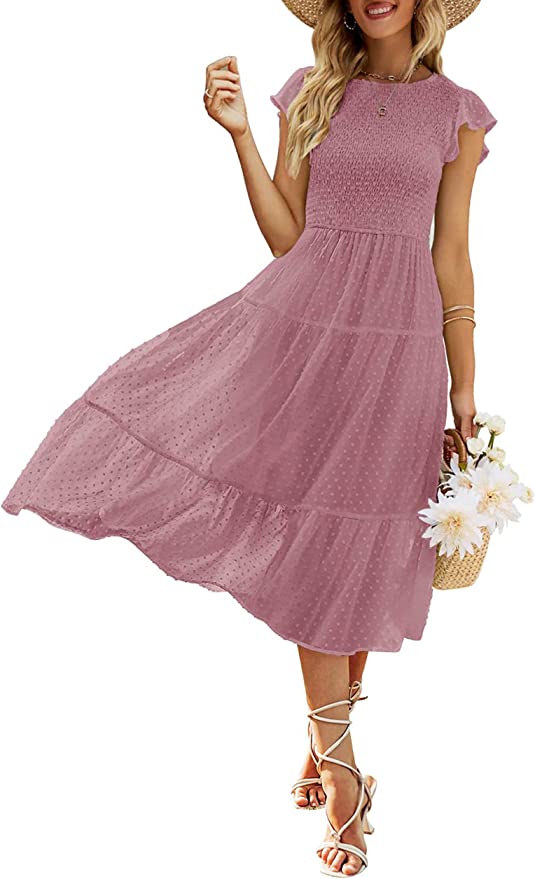

Juliet Sleeves
Similar to the leg of mutton sleeve, the Juliet sleeve was inspired by the film Romeo and Juliet in the 1960s. The Juliet sleeve is puffy at the shoulder and top of the arm, then tapers down to a slim fit. The difference between the leg of mutton and the Juliet sleeve is that the Juliet is constructed in two pieces instead of one.
Kimono Sleeves
Inspired by traditional Japanese clothing, the Kimono sleeve is a wide sleeve similar to a batwing in construction. The kimono sleeve is an attached style sleeve. The length can vary from below to elbow to longer. This is a relaxed style used on casual dresses and tops.
Lantern Sleeves
A lantern sleeve is a fuller sleeve that balloons out between the wrist and elbow. The sleeve gathers around the wrist area to create the balloon effect. A lantern sleeve pattern will consist of two parts, the top of the sleeve from the shoulder, roughly down to ¾ of the sleeve length. The second pattern piece will be the bottom ¼ of the sleeve, which is a wide semi-circle shape. When sewn together, the opposite curves create the balloon effect.
Marie Sleeves
I designed a lovely white cotton voile blouse for one of my university collections that featured a Marie sleeve. It was delicate and ‘scrummy’, as my tutor called it. This sleeve style is different and not commonly seen, but it is pretty when sewn in lightweight fabrics. I like to think of this style as a pirate shirt. The sewing pattern is a simple rectangle that has gathered segments down the length. This creates an exaggerated puffed effect along the length of the sleeves.
Leg of Mutton Sleeves (Gigot Sleeves)
Becoming increasingly popular among higher fashion in 2022, the leg of mutton sleeve style is a cleverly constructed one. The sleeve is full and puffed around the shoulder, which tapers down to be fitted around the rest of the arm to the wrist. The name comes from the fact that it looks like a leg of lamb. This style is seen increasingly in designer dresses and tops to add detail and interest to simple designs.


Off-Shoulder Sleeves
The off-the-shoulder neckline or sleeves sit across the top of the chest from shoulder to shoulder. Clothing with off-the-shoulder necklines often has elastic sewn into them, making them comfortable. Its boho appeal makes this style extremely popular in summer. Off-the-shoulder styles can be sleeveless, short-sleeved or long-sleeved.
Open Sleeves and Slit Sleeves
An open or slit sleeve type has a slit down the sleeve to the wrist. This dramatic style is mainly used for going-out dresses and tops to add interest and mystery. The shoulder and entire arm are exposed. This style works best with lightweight fabrics that drape well, like chiffon, organza or satin.
Peasant Sleeves
A peasant sleeve is casual, loose, and delicate. An effortless style, they can be either short or long. A peasant blouse is a boho blouse usually made from a lightweight fabric like voile. Usually, a peasant sleeve is paired with a raglan cut to create this relaxed blouse style.
Petal Sleeves
A pretty, delicate sleeve style, the petal sleeve is an overlapping style shaped like ‘petals’. This sleeve type is created by sewing two separate sleeve pieces that overlap. Some people refer to petal sleeves as tulip sleeves.
Puff Sleeves
My favourite style is the puff sleeves. This style is a fun, very trendy sleeve style for 2022. Puff sleeves are variations of simple sleeves like t-shirts with added fullness that gathers into a cuff or elastic band. Puff sleeves come in a variety of lengths, from short to long. Some fabrics can be fuller or more structured, depending on the fabric choice. Puff sleeves are trending on t-shirts, blouses, casual tops, casual and formal dresses, jackets, and coats.
In my blog post, How To Make A Puff Sleeve Top, you can learn how to adapt any sleeve pattern into a puff sleeve.
Raglan Sleeves
The raglan sleeve is mainly found among comfortable loungewear styles. Its cut is unique because it doesn’t have any shoulder seams. Instead, the sleeve has part of the bodice neckline, front and back pattern, eliminating the armhole seams.

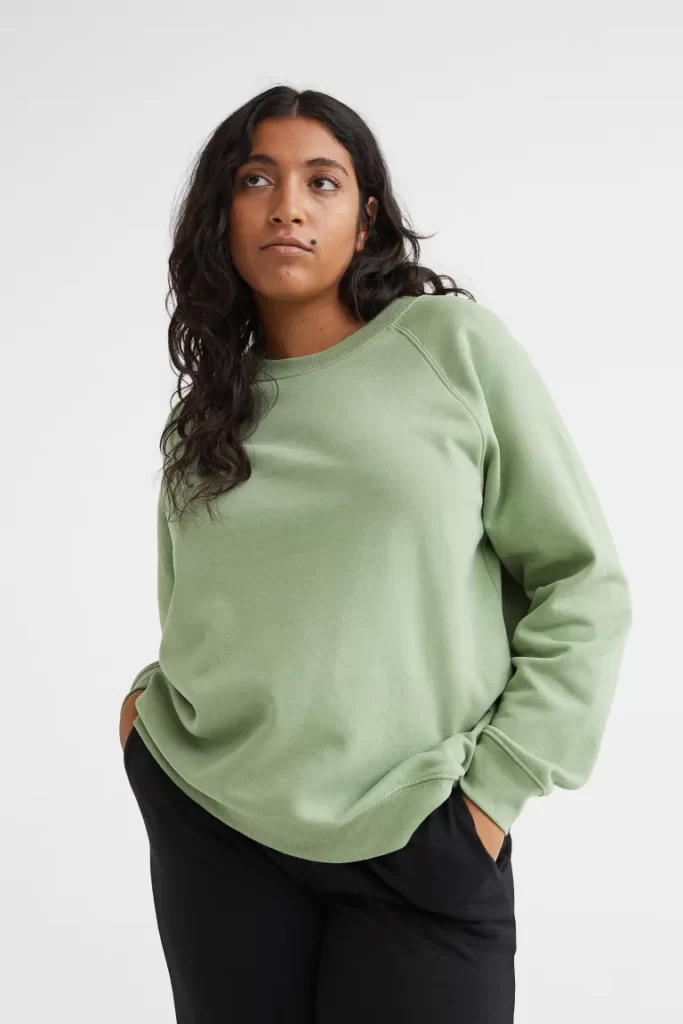
Ruffled Sleeves
Sometimes called frill sleeves, ruffle sleeves are layers of fabric sewn together to create a sleeve. It is constructed of three to four pattern pieces, one longer than the other, to create tiered layers. This style can be short, like a flutter sleeve with layers or long down to the wrist.
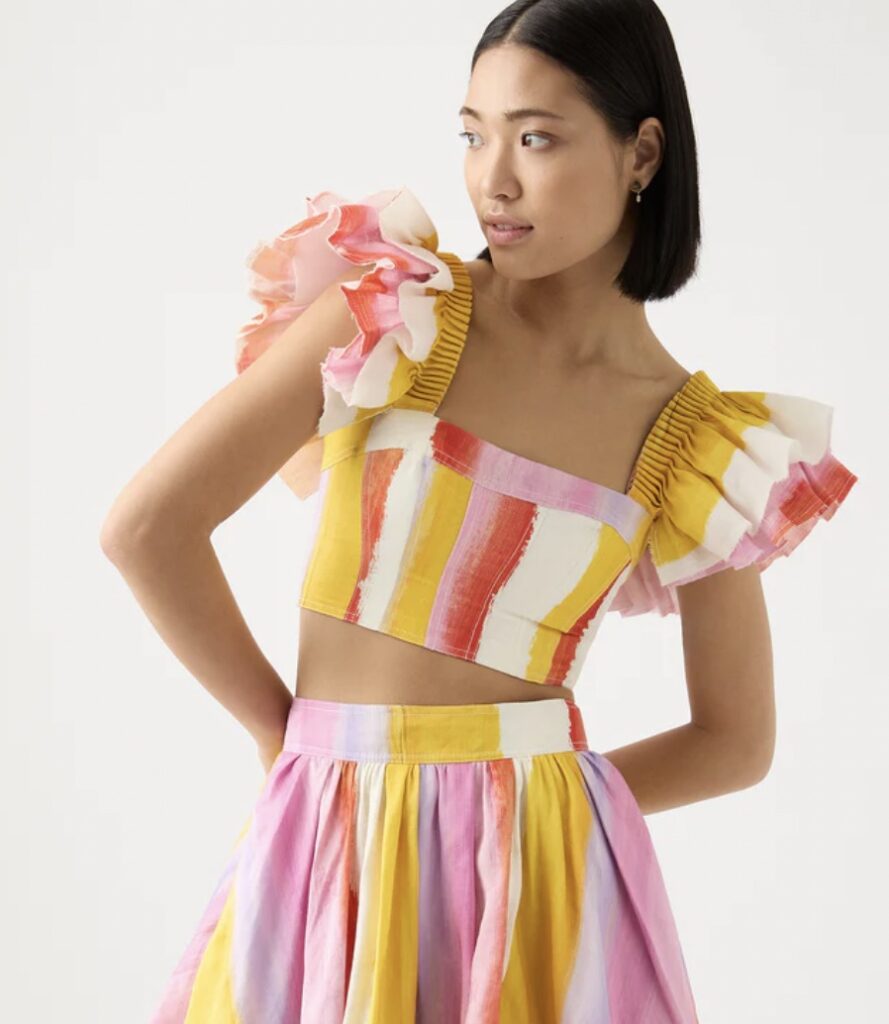

T-Shirt Sleeve
A simple t-shirt sleeve is one of the most common sleeve types and the most basic sleeve pattern. Its simple shape often ends halfway down the bicep. It can be fitted or loose, depending on the style. If you sew, having a t-shirt sleeve pattern is handy to adjust to many other sleeve styles, as mentioned in this blog post.
3/4 Length Sleeves
This is the length that a sleeve finishes at. The ¾ length sits between the elbow and wrist. A simple ¾ sleeve is a more extended version of a simple t-shirt pattern. It is a style seen among knit t-shirts, simple tops, and modest dresses. ¾ sleeves can be referred to as a bracelet sleeve because the length allows bracelets to be visible when worn.
Types of Sleeves Conclusion
I hope you have gained insight into the different types of sleeves and how they work. Understanding the design features of sleeve types and how they work is one of the best ways to make informed decisions when shopping or sewing dresses and tops.
The sleeve styles of many garments have been adapted over time to create playful or interesting pieces of clothing. Whether for special occasions, going out, casual wear, or warmer or colder weather, they all serve a purpose.





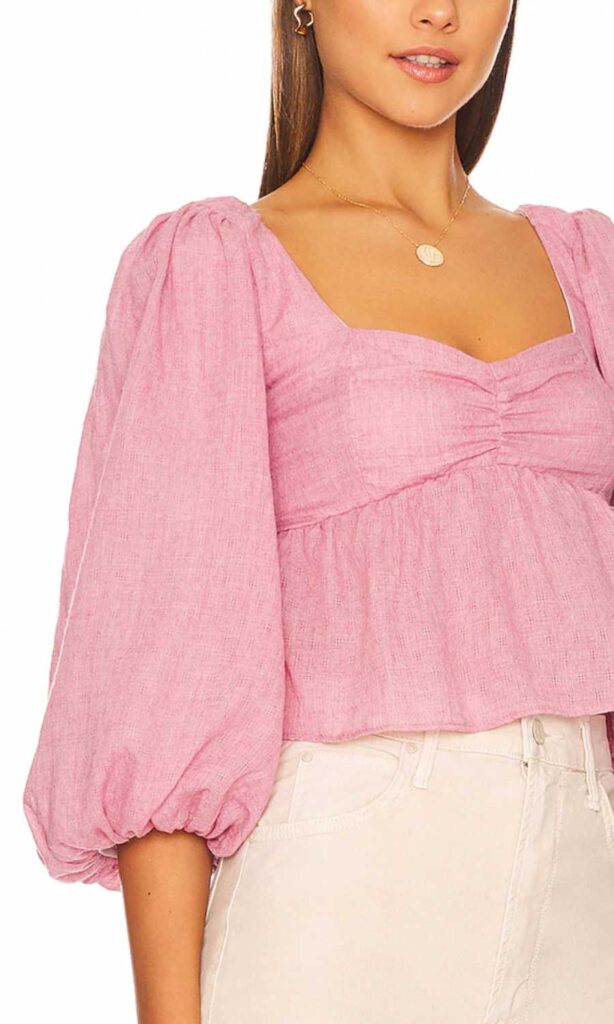


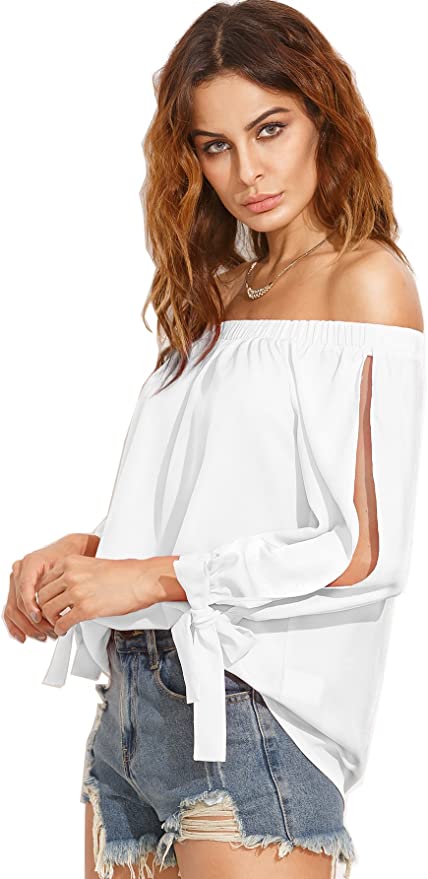

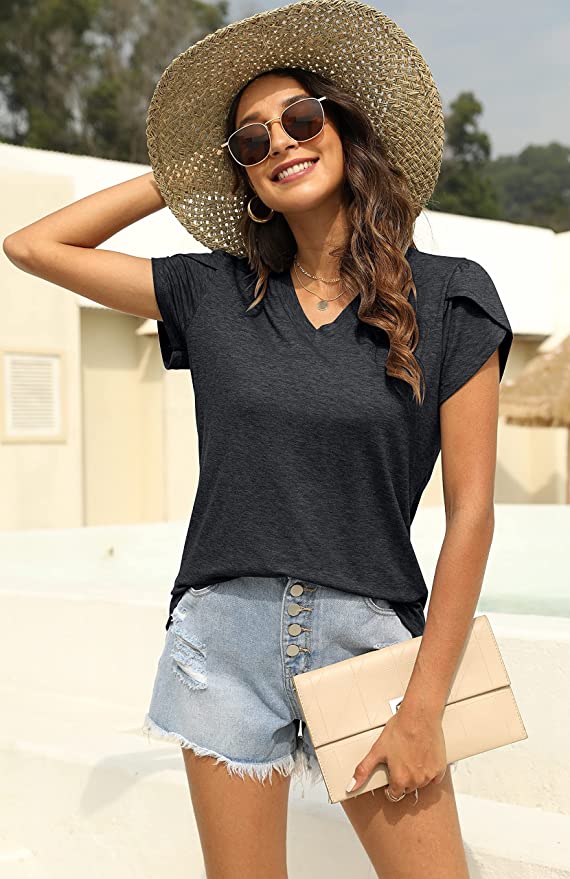



I have a lovely shirt with huge long bell sleeves that are just too much and I need a solution…but cannot seem to find one suitable…would love advice. The bottom of the shirt is shirred…round neckline, rayon and hangs blousey and and wonderful except for those massive sleeves…that catch on and knock over everything…help !
Hi Karen, oh no I get what you mean! You could try adding some elastic to the sleeve hems to pull them into a gathered cuff instead 🙂 Thanks!